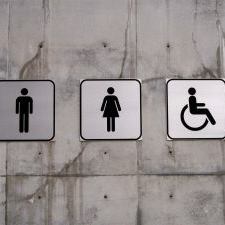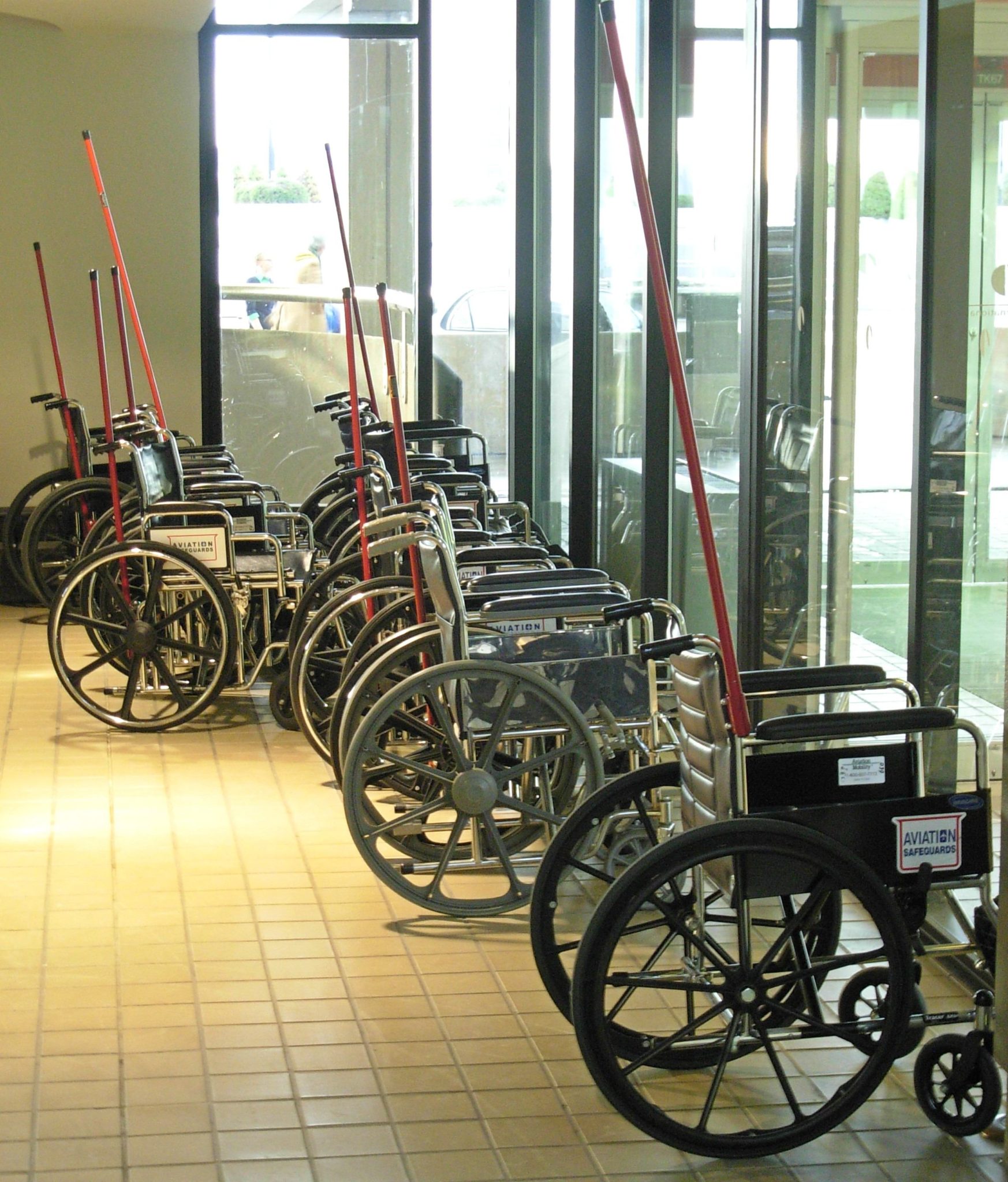Travel Tips
Accessible Travel: The Basics Of Wheelchair Travel
Image Credit: Wikimedia Commons User Piotrus
No matter how well you plan, traveling in a wheelchair includes surprises and unexpected obstacles. From narrow hotel doorways to subway stations with broken elevators, every trip requires patience and flexibility. Barbara Twardowski, who uses a wheelchair, and her husband Jim Twardowski, a registered nurse, share some of their top tips for planning accessible travel.
By far the biggest challenges are flying, getting around, finding accessible accommodations and locating family bathrooms. But after years of traveling together, we’ve discovered a few tips and tricks along the way.
Flying
Always arrive early to the airport. Typically, people with mobility disabilities are the first to board and the last off of the plane. Non-walkers are transferred to an aisle chair and rolled on board.
The biggest inconvenience on a plane is the lack of an accessible bathroom. Clearly label your wheelchair with an identifying tag. Carry loose parts, such as a cushion, onto the plane. Before landing, ask the flight attendant to call ahead so your wheelchair will be waiting.
Carefully read the information for passengers with disabilities provided by the airline on which you fly. The Air Carriers Access Act is enforced by the U.S. Department of Transportation and governs access on US airlines. Review your rights online www.airconsumer.ost.dot.gov.
Getting Around
Even in the U.S. access is inconsistent—many places are not wheelchair accessible and what works for one wheeler might not work for another. For example, Barbara uses a power wheelchair that weighs 250 pounds and can only go up ramps or over thresholds less than 1.5inches tall.
If a curb does not have a cutout, Barbara has to drive the chair into the street—not a wise option in congested traffic. To avoid this problem, she uses a manual chair when traveling to unfamiliar destinations.
Some of the most complex and expensive aspects of wheelchair travel are simply trekking from point A to point B. If a person can transfer from a wheelchair into a vehicle it makes things much easier. Individuals who cannot transfer have to arrange for wheelchair accessible solutions. Most require booking the transportation 48 hours or more in advance.
Super Shuttle charges $15 per person for a shared ride or $115 for an exclusive van. In New York, Vega Transportation is a luxury paratransit service. The one-way fee from LaGuardia Airport to New York City is $165.
 Most major U.S. metropolitan areas have vehicles equipped to carry wheelchair users and a few have wheelchair-accessible taxis. However in smaller communities, it may be impossible to hire a paratransit company.
Most major U.S. metropolitan areas have vehicles equipped to carry wheelchair users and a few have wheelchair-accessible taxis. However in smaller communities, it may be impossible to hire a paratransit company.
If someone in your party can drive, wheelchair-accessible rentals are an option. Wheelchair Getaways rents vehicles for $85 to $145 per day depending upon the location. Accessible Vans of America rates also vary by location.
Once you’ve reached your destination, how do you get around to see the sights? We always try to book hotels near the major attractions and walk. The rooms may cost more, but the access is worth it. Before you go, investigate the transportation options.
Some cities, such as Little Rock, are extremely wheelchair friendly. All the vintage-looking electric streetcars have wheelchair lifts that pop out from the steps. Riders can hop one of two lines through the downtown area—stopping at major attractions like the William J. Clinton Presidential Library or ride the rail across the Arkansas River into North Little Rock.
In Minneapolis, the Hiawatha Line is a light-rail service with 19 stations between downtown and the Mall of America. Each vehicle has four designated wheelchair seats and train doors have level boarding. All stations have ramps and stations located on bridges have elevators.
Accessible Accommodations
The 20-year-old Americans with Disabilities Act (ADA) makes finding a wheelchair-accessible hotel room in the U.S. much easier than it used to be. Call the hotel’s main number and discuss your needs with the front desk before confirming a reservation. Be specific and ask questions. For example, every accessible room does not come with a roll-in shower. Ask if the shower includes a transfer bench or if one is available.
Booking a wheelchair-accessible Bed & Breakfast (B&B) is more difficult, which is why we recommend buying There is Room at the Inn by Candy Harrington (disclosure: Candy Harrington has contributed to PeterGreenberg.com, see her articles in the related links). She describes more than 100 properties in 40 states for slow walkers and wheelchair users.
 Locating a Bathroom
Locating a Bathroom
If someone requires assistance to manage the restroom, they need a family or unisex bathroom which can be difficult to find. Even at most road side parks, there are separate bathrooms for men and women, which can make things awkward if a husband needs to assist his wife.
Keep in mind that the accessible stall may not be large enough for two people and a wheelchair. Every trip we take involves a bathroom scavenger hunt. Some of best places to find a usable bathroom include chain stores like Target, Walmart, and Starbucks.
Worth the Trouble
Seeing new places is fun. Despite the obstacles, every journey is worth the inconveniences. Go ahead and hit the road, ask about accessibility before you depart, and pack your sense of humor.
Related links on PeterGreenberg.com:
- AARP Video Tip: Slow Travel
- Candy Harrington: Hotels.com Upgrades Will Benefit Disabled Travelers
- Candy Harrington: Updated Travel Laws on Accessibility
By Barbara & Jim Twardowski for PeterGreenberg.com. Barbara and Jim have been published in a variety of outlets including AAA Home & Away, Global Traveler, QUEST, Disaboom, and Special Parents.













